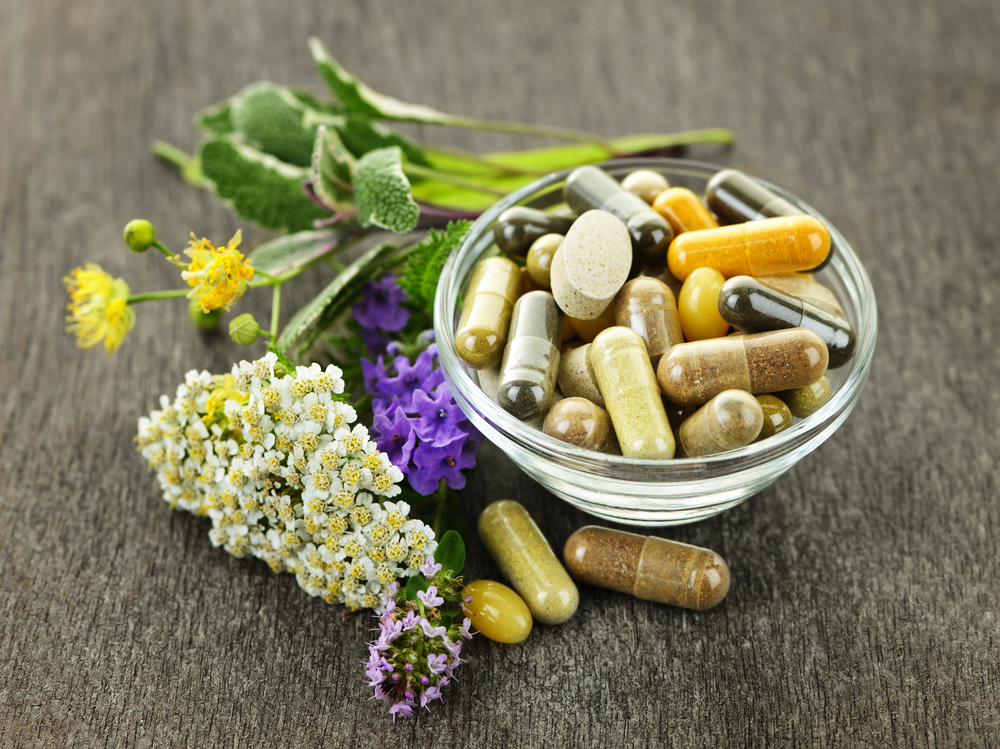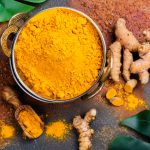Intensely aromatic and flavorful, garlic is used in virtually every cuisine in the world. When eaten raw, it has a powerful, pungent flavor to match the truly mighty garlic benefits. It is particularly high in certain sulfur compounds that are believed to be responsible for its scent and taste, as well as its very positive effects on human health.
Garlic benefits rank only second to turmeric benefits in the amount of research backing this superfood. At the time of this article’s publication, there were more than 7,600 peer-reviewed articles that evaluated the spice’s ability to prevent and improve a wide spectrum of diseases.
Eating garlic regularly is not only good for us — it has been linked with reducing or even helping prevent four of the major causes of death worldwide, including heart disease, stroke, cancer and infections. Garlic is recognized as having anticancer properties.
Other than the most extreme, rare situations, every person on the planet should consume this spice. It’s extremely cost-effective, super easy to grow and tastes absolutely fantastic.
Garlic Basics
Garlic and onions have been a part of cooking since ancient times. The fragrant garlic plant has been called by many names, including “the bulb of the tree of life” for its anti-aging properties. Garlic is a vegetable in the Allium family of bulb-shaped plants. It grows in several sizes and colors and can be planted alongside other vegetables as a natural pesticide.
Although dining on garlic-flavored foods may give you “garlic breath,” this food is believed to help improve health by lowering high blood pressure and “bad” (LDL, low-density lipoprotein) cholesterol levels.
The health benefits of garlic also include its natural antibiotic action that prevents the growth of bacteria, antioxidant action to help fight free radical damage, and anti-inflammatory properties, all of which may help prevent cancer.
Garlic contains high levels of sulfur, flavonoids, and selenium. And, when it is crushed, chopped, or bruised, garlic produces the compound allicin. Allicin can have an effect on cells called signaling cells, which control cell growth.
Three of the cancer-fighting compounds in garlic are:
- Allicin: This plant compound is antibiotic and antifungal (inhibits the growth of fungi). Raw is best since cooking speeds the breakdown of allicin, and microwaving appears to destroy it and eliminate the health benefits.
- Flavonoids: These are aromatic plant compounds that are considered to have antioxidant and anti-inflammatory (prevents or reduces inflammation) properties. These compounds can help fight cancer by preventing cell damage.
- Selenium and Allyl Sulfides: These substances keep cell DNA from being damaged—DNA damage is the root cause of cancer.
Health Benefits
When looking at the potential benefits of garlic in relation to cancer prevention, it’s helpful to search for studies that examine a relationship between eating large amounts of garlic and its effect on rates of cancer. Multiple studies have been done on garlic and its role in cancer prevention.
Garlic has been associated with a reduced risk of the following cancers:
- Stomach cancer
- Colon cancer
- Pancreatic cancer
- Esophageal cancer
- Breast cancer
- Prostate cancer
How Garlic May Reduce the Development of Cancer
Many processes are present when cancer starts to grow, but it all starts with the DNA inside of a cell becoming abnormal. A normal, healthy cell is made in a very predictable process, and then, at the proper time, it undergoes cell death.
The abnormal DNA in cancer cells causes them to make new cancer cells uncontrollably, and the cells do not die when they are supposed to. Substances in garlic may play a role in improving the process of cancer cell growth, including repairing DNA.
Garlic and Cancer Treatment
There is currently research looking at the potential role of garlic in cancer treatment. Most of the research is animal or laboratory research, although there are also human studies. While the research doesn’t quite have clear answers, it is showing some promising results.
Garlic may affect signaling pathways in cancer growth in a number of ways, including:
- Cell cycle arrest: Garlic appears to cause cell cycle arrest, meaning it stops cells from continuing to divide. Cell cycle arrest is how many chemotherapy drugs work, in a variety of different points in the cell cycle.
- Decreased blood vessel growth: Cancer cells need blood and nutrients to survive, and sometimes cancer cells can even grow their own blood vessels. Garlic appears to reduce the ability of cancer cells to promote the growth of new blood vessels.
- Increased cell death: Normal cells die at a certain point, and cancer cells are often able to avoid this natural cycle of cell death. Garlic and its components appear to increase the rate of cancer cell death.
A 2019 study in China found that treating Helicobacter pylori ( H. pylori, a bacterial infection associated with stomach cancer) for two weeks or giving garlic supplementation for seven years significantly reduced the risk of death due to gastric cancer.
Raw Garlic Benefits
As you are about to see, raw garlic benefits are plentiful. It can be used as an effective form of plant-based medicine in many ways, including the following.
Heart Disease
According to the Centers for Disease Control and Prevention, heart disease is the No. 1 killer in the United States, followed by cancer. This spice has been widely recognized as both a preventative agent and treatment of many cardiovascular and metabolic diseases, including atherosclerosis, hyperlipidemia, thrombosis, hypertension and diabetes.
A scientific review of experimental and clinical studies of garlic benefits found that, overall, consumption of this spice has significant cardio protective effects in both animal and human studies. Probably the most amazing characteristic is that it’s been shown to help reverse early heart disease by removing plaque buildup in arteries.
A 2016 randomized, double-blind study involved 55 patients, aged 40 to 75 years, who had been diagnosed with metabolic syndrome. The results of the study showed that aged garlic extract effectively reduced plaque in coronary arteries (the arteries supplying blood to the heart) for patients with metabolic syndrome.
High Blood Pressure
An interesting phenomenon is that this common herb has been shown to help control high blood pressure. One study looked at the effect of aged garlic extract as an adjunct treatment for people already taking antihypertensive medication yet still having uncontrolled hypertension.
The study evaluated 50 people with “uncontrollable” blood pressure. It was uncovered that simply taking four capsules of aged garlic extract (960 milligrams) daily for three months caused blood pressure to drop by an average of 10 points.
Another study published in 2014 found that the spice has “the potential to lower BP in hypertensive individuals similarly to standard BP medication.” This study further explains that the spice’s polysulfides promote the opening or widening of blood vessels and, hence, blood pressure reduction.
READ MORE: Garlic – The Natural Remedy To Lower Cholesterol and Blood Pressure
Colds and Infections
Experiments have shown that garlic (or specific chemical compounds like allicin found in the spice) is highly effective at killing countless microorganisms responsible for some of the most common and rarest infections, including the common cold. It actually might help prevent colds as well as other infections.
In one study, people took either garlic supplements or a placebo for 12 weeks during the cold season (between November and February). Those who supplemented with the spice were less likely to get a cold, and if they did get a cold, they recovered faster than the placebo group.
The placebo group had a much greater likelihood of contracting more than one cold over the 12-week treatment period as well. The study attributes the spice’s ability to prevent the common cold to its star biologically active component, allicin.
Its antimicrobial, antiviral and antifungal properties can help relieve the common cold as well as other infections. Allicin in particular is believed to play an important role in this vegetable’s antimicrobial powers.
Male and Female Hair Loss (Alopecia)
A clinical trial was conducted to test what a survey has shown to be a growing practice in Turkey: using garlic to treat baldness. They tested how garlic gel applied on the scalp twice a day for three months could affect people taking corticosteroids for alopecia.
Alopecia is a common autoimmune skin disease, causing hair loss on the scalp, face and sometimes on other areas of the body. Different treatments are currently available, but no cure is yet known.
The researchers discovered that the use of the gel significantly added to the therapeutic efficacy of topical corticosteroid in the treatment of alopecia areata. Although the study didn’t test it directly, applying garlic-infused coconut oil as a standalone treatment might even be more beneficial as a hair loss remedy because it mitigates the risk of absorbing harmful corticosteroids in the skin.
Alzheimer’s Disease and Dementia
Alzheimer’s disease is a form of dementia that can rob people of the ability to think clearly, perform everyday tasks and, ultimately, remember who they even are. This spice contains antioxidants that can support the body’s protective mechanisms against oxidative damage that can contribute to these cognitive illnesses.
When it comes to Alzheimer’s patients, β-amyloid peptide plaques are commonly observed in the central nervous system, and these plaque deposits result in the production of reactive oxygen species and neuronal (cells in the nervous system) damage.
A study found “significant neuroprotective and neurorescue properties” of aged garlic extract and its active compound SAC. The researchers conclude from their findings that the aged extract along with SAC can be used to develop future drugs to treat Alzheimer’s disease.
Diabetes
Eating this popular spice has been shown to help regulate blood sugar levels, potentially stop or decrease the effects of some diabetes complications, as well as fight infections, reduce LDL cholesterol and encourage circulation.
A study of diabetic rats showed that this spice may be very helpful at improving the overall health of diabetics, including the mitigation of common diabetic complications like atherosclerosis and nephropathy. These rats, which received a daily extract of raw garlic for seven weeks, had significantly lower serum glucose (blood sugar level), cholesterol and triglyceride levels.
Compared to the control group, the rats receiving raw garlic had 57 percent less serum glucose, 40 percent lower serum cholesterol levels and 35 percent lower triglycerides. In addition, urinary protein levels in spice-treated rats were 50 percent lower.
Another study also showed that for type II diabetes patients, garlic significantly improved blood cholesterol levels. Specifically, its consumption reduced total cholesterol and LDL (bad) cholesterol and moderately raised HDL cholesterol compared to placebo.
How to Use and Buy Garlic for Health
You can use garlic in several ways to boost your health. If you want to reap the most rewards of garlic, it’s helpful to understand the best ways to buy, prepare, and cook the cloves.
The greatest benefit will come from fresh, uncooked garlic. If you prefer to try other forms of garlic, there’s garlic essential oil, garlic powder, and garlic extract, but the benefits of these products are not known.
It may take only a small amount of garlic to provide its cancer-reducing effects. Even one clove of garlic daily has been linked with a reduced risk of some cancers.
Preparing fresh garlic is ideal. Though jars of minced garlic are convenient and tasty, only a small fraction of the phytonutrients survive over time. Allicin is released when garlic is exposed to air, so it’s important to chop or use your garlic press and then allow the garlic to sit exposed to air for around 10 minutes before adding it to a salad or using it in cooking.
Summary
Garlic contains compounds that can benefit your health, including possibly reducing the risk of cancer. The compounds in garlic are more abundant when garlic is eaten raw, or lightly cooked, to prevent these protective compounds from breaking down.
This is just one step that can be taken when following a diet and living a healthy lifestyle with the goal of reducing the risk of cancer. Eating garlic can be an easy way to introduce some health-protective compounds into your diet.
It can be included in an overall healthy lifestyle along with lots of fresh fruits and vegetables, and with regular exercise. To avoid adverse interactions with medications you take, never take any supplements without discussing with your healthcare team first.









